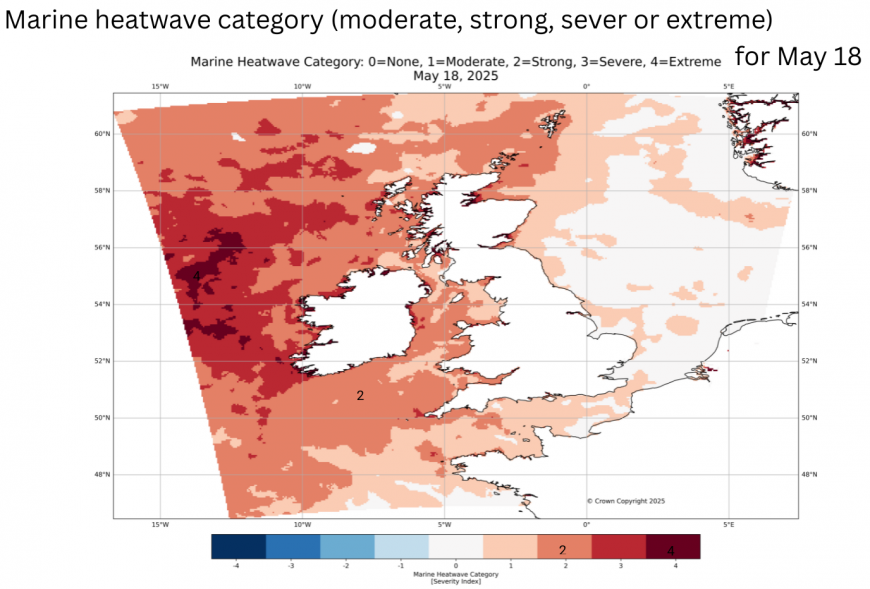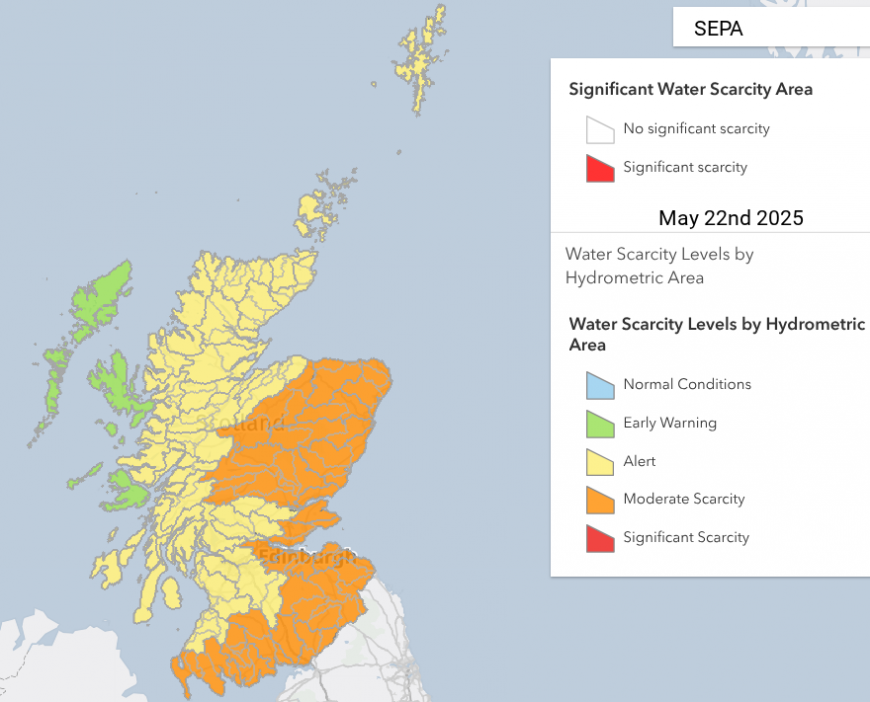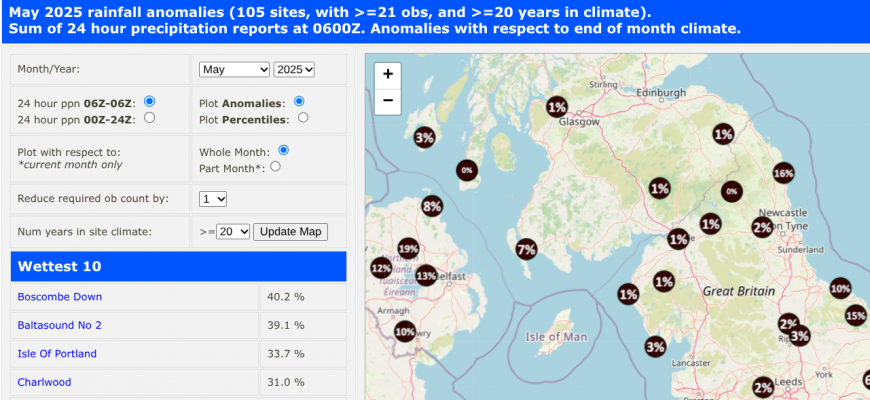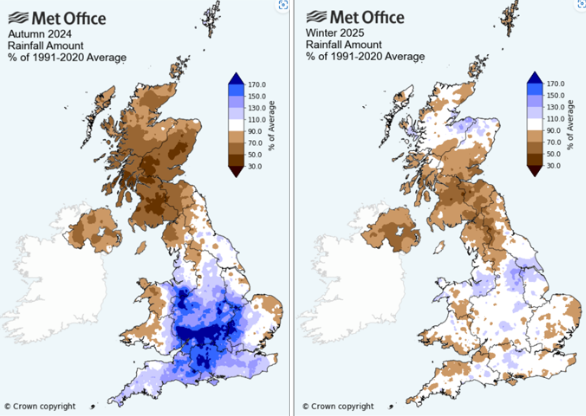
Both Scotland and Northern Ireland have already seen their sunniest spring on record. Meteorologically, the months of March, April and May are treated as spring for data purposes.
Announced on Thursday 22nd Northern Ireland had (provisionally) recorded 570 hours of sunshine beating the previous sunniest spring in 2020. That was back in the time of lockdown when many people were staying at home and the lengthy fine weather became imprinted on their memories.
On the 21st of May, the Met Office announced that Scotland had already seen its sunniest spring on record with 520.5 hours of sunshine, again with the previous record being in 2020.
The series dates back to 1910 and people are asking, have we had our summer, was that it? We will have to wait for the long-range netweather summer forecast for the hints and themes of what is to come.

High pressure residing over the UK and northwestern Europe has allowed weeks of dry weather and clear skies. It has also had an impact on the seas around Great Britain and Ireland. Dr Ségolène Berthou of the UK Met. Office
“Northwest European waters are currently experiencing an extreme marine heatwave, with sea surface temperatures (SSTs) reaching record highs for April and May since satellite monitoring began in 1982.”
The temperatures are closer to what would be expected around mid-June and the event is significant due to the intensity and duration. This marine heatwave is the result of several overlapping factors.
“Prolonged high-pressure systems brought a dry, sunny spring and weak winds and waves, creating ideal conditions for warming. This means the sea started to warm in mid-February, one month earlier than usual. Additionally, the waters around the UK were already warmer than usual coming out of winter, a trend that has been building over the past 40 years, with an average increase of 0.3°C per decade.”
So it’s not just the air temperatures. Back on land, in the middle of the month, there were signs that May and spring records would fall for sunshine, temperature and the lack of rainfall. With a week to go, there is change on the horizon with rain on the way, to coincide with a Bank Holiday weekend. The persistent high pressure is fading and the doors are opening finally to Atlantic weather fronts and blustery showers.

SEPA Water Scarcity report 22nd May 2025
Whether it will help the water scarcity situation in eastern Britain, we will have to see. Scottish Water thanked customers after a plea to reduce water usage last week, following the driest start to the year across Scotland since 1964.

Kes Juskowiak, a Scottish Water Director, said: “We’d like to say a massive thank you to everyone who has helped reduce water demand by using what is a precious resource as efficiently as possible, but we need customers to continue their support and to take whatever measures they can to do so.” “Gardeners can have a particularly big impact by switching off sprinklers and using watering cans instead.”

Starlings Roost rainfall data anomaly, so far against May as a whole month.
The northeast of England has also been very dry. Northumbrian Water shared,
“Fixing a dripping tap can save up to 5,600 litres of water each year. That’s enough to fill 80 baths."
Getting a plumber round to do that might be the issue. Perhaps training in school for young people would help, so they know how to change a washer. Part of skills for life for all of us. Or teams from the water companies offering a Fix-a-dripping-Tap service (for a set fee) moving about the region, assisting a different town each week.

There has to be some different thinking for these issues as our climate continues to change and warm. Once the rain returns, the wider issue will lose its standing and fall away from the headlines. However, Northern Ireland, much of Scotland and the far north of England had a dry autumn and a dry winter. These are the main months of replenishment when the reservoirs and groundwater levels refill. Spring and summer are times of greater demand, this recent dry sunny spell has not been a good start. The grass may recover quickly turning back from brown to green, but the crops, soil and waterways have been struggling.
Loading recent activity...